If you locate a run-on sentence and find where the two independent clauses "collide," you can decide how best to separate the clauses. Fixing run-on sentences is very similar to fixing comma splices. You can make two complete sentences by inserting a period. You can use a semicolon between the two clauses if they are of equal importance; this allows your reader to consider the points together. You can use a semicolon with a transition word to indicate a specific relation between the two clauses; however, you should use this sparingly. You can use a coordinating conjunction and a comma, and this also will indicate a relationship.
Or, you can add a word to one clause to make it dependent. Once you discover where the two independent clauses are "spliced," there are several ways to separate them. You can use a coordinating conjunction following the comma, and this also will indicate a relationship.
One of the purposes of the comma is to balance in parallel elements of like meaning and form. A dependent clause can be nestled inside an independent clause. When a dependent clause is within the independent one, it's an interrupter. An interrupter simply breaks the flow of a sentence, and there are many different kinds, not just dependent clauses. Any time these items interrupt a sentence—interrupt an independent clause—they are nonessential elements and need to be separated from the independent clause with punctuation. A sentence that consists of two or more independent clauses and at least one dependent clause.
These clauses can be joined into a compound-complex sentence using a subordinating conjunction, such as which, because, before, after, if, since, until, and when, etc... Moreover, they can be joined by a coordinating conjunction such as for, and, or but. Note that not all commas are similarly up for debate. Many follow directly from the grammar of the sentence, such as those that distinguish between restrictive and nonrestrictive elements in a sentence. But this comma that comes in to demarcate two independent clauses is entirely optional — in all contexts — if those two clauses are short and closely related.
Beyond that, in fiction, if you're going for a particular voice, a particular effect, it's perfectly permissible to omit this comma even with much longer structures. You'll see that approach more with some authors than others. Use a comma before any coordinating conjunction that links two independent clauses. An independent clause is a unit of grammatical organization that includes both a subject and verb and can stand on its own as a sentence. A dependent clause cannot stand alone as a sentence.
Like an independent clause, it has a subject and a verb. It may not, however, express a complete thought and may begin with a signal word called a subordinating conjunction. The chart below outlines common coordinating and subordinating conjunctions discussed in this section. Academic writing expresses complex ideas and, as a result, often requires sentences that are equally complex.
For this reason, it's not uncommon to see comma splices—joining two independent clauses with a comma—in your work as the demand for complexity increases. Below you'll find ways to recognize and correct these kinds of errors. This is the trickiest arena in which to learn comma usage. You really need to know the rest of your grammar rules well in order to properly use commas. Knowing dependent and independent clauses is essential – so bone up on it if you must!
(These videos are a good place to start.) In today's post, I'm going to cover each of the four sentence structure types and let you know when and when not to use a comma. A comma splice is the use of a comma between two independent clauses. In most cases, joining two independent clauses (i.e., clauses that can stand alone as complete sentences) by a comma creates a comma splice. A sentence that consists of two or more independent clauses.
Independent clauses can be joined into a compound sentence using a coordinating conjunction such as for, and, or but. It's there also to call out this balanced relationship between the two clauses. Using it represents the baseline and neutral approach. Some students are unfamiliar with the definitions and rules of clauses and punctuation, the basic building blocks of sentence structure. This problem does not show itself too much when you write in the first person voice ("I remember once . . .") because that is your natural idiom. This occurs because the language needed for an academic paper isn't the natural idiom of our everyday language, and so the phrases and sentences that we need don't come naturally to mind.
In some ways, it seems like trying to write in a foreign language. To combine two complete sentences/ independent clauses, you have two options. You can use a comma with a conjunction, or you can use a semicolon. If you use a comma and conjunction, the acronym FANBOYS will help you remember the conjunctions . If you use a semicolon, you do not have to capitalize the first letter of the next sentence.
A group of words that contains a subject and verb and expresses a complete thought. Therefore, independent clauses can stand alone in the sentence. Semicolons can be used to separate two independent clauses.
Perhaps the most common use of a semicolon is to link two separate, independent clauses that could stand as grammatically correct, fully formed sentences on their own. The caveat to this rule is that the clauses must be related. When you have two independent clauses (i.e., full sentences) that are joined by a coordinating conjunction, you have a compound sentence.
Although this coordinating conjunction conjoins two independent clauses, they are short and closely related. And adding in the comma would change the shape of the larger structure. The information between the commas could be lifted out of the sentences and these sentences would still make sense in terms of both grammar and meaning. That is, taking out the dependent clauses would not negate the other parts of the sentence. The information between the commas is nonessential. The information may add details, but taking it out wouldn't change the major thrust of the sentence or have readers trying to figure out what was going on.
The sentences without the nonessential words, phrases, and clauses can stand on their own. Thus, it can separate two independent clauses by itself; a comma cannot separate two independent clauses unless it is followed by a coordinating conjunction . When an introductory phrase or clause, or any other dependent clause, equally modifies the compound structure of two independent clauses, the standard approach is not to use a comma.
Do Commas Separate Dependent Clauses The overarching principle is that a comma need not be used between two short and closely connected independent clauses, period. This is often even more so the case when that unit of two is interwoven in various ways with other structures. Sometimes two short and closely related independent clauses are not interrupted with a phrase or clause, but instead one precedes or follows. You would include the comma between the two independent clauses or not depending upon the desired effect of the whole.
Fused sentences happen when there are two independent clauses not separated by any form of punctuation. The error can sometimes be corrected by adding a period, semicolon, or colon to separate the two sentences. When joining two independent clauses, or clauses that could stand on their own as full sentences, place a comma before the conjunction. If the second independent clause is very short, or if it is an imperative, the comma can be omitted. Coordinating conjunctions are conjunctions, or joining words, that are placed between words and phrases of equal importance.
Used with coordinating conjunctions, commas allow writers to express how their complete thoughts relate to one another. They also help avoid the choppy, flat style that arises when every thought stands as a separate sentence. The exception to the above rule about independent clauses preceding the dependent clause is in cases where the dependent clause is not essential to the meaning of the entire sentence. In cases like this, do separate the dependent clause with a comma. Here, the two independent clauses within the structure are short and closely related.
If they stood on their own, you might use the comma or not, depending upon the phrasing that was wanted. Sometimes, we want to link two independent clauses together without using "and" or "but," or any other coordinating conjunction. A comma splice is a sentence that has two or more independent clauses joined only by a comma. To join two closely related independent clauses that are not joined by a coordinating conjunction. When you join a dependent clause to an independent clause, you are not joining equals. One side of the resulting sentence is stronger, and the other side is weaker, or subordinate.
(If you are a subordinate at work, you do as you're told.) The words used to join unequal pairs of clauses are called subordinating conjunctions. Keep in mind that while we were looking at commas with dependent clauses, we were specifically looking at adverbial clauses beginning with subordinating conjunctions. There is a comma in the fourth example because the dependent clause begins with although, an adverb of concession. The adverbs of concession set up contrast clauses. Adverbs of concession include though, although, even though, and whereas. Use commas to introduce dependent clauses beginning with these words, even when the independent clause comes first.
The definitions offered here will help you with this. Often, two independent clauses can be joined with a conjunction, such as and, but, or, so, yet, or any other conjunction. A comma is placed right before the conjunction in this type of complex sentence. There's no comma here—because now there is only a single clause. A rule of thumb is to check to see if there is a subject explicitly stated with each verb.
If two or more verbs go with the same subject, you don't need a comma because you don't have multiple independent clauses. Both clauses are independent and could stand on their own as complete sentences. When they are joined in the same sentence, however, they must be connected with a comma and a coordinating conjunction. Commas are necessary before a coordinating conjunction that separates two independent clauses. A sentence that consists of one independent clause and at least one dependent clause. These clauses can be joined into a complex sentence using a subordinating conjunction, such as which, because, before, after, if, since, until, and when, etc...
A dependent clause is a group of words with a subject and a verb. It does not express a complete thought so it is not a sentence and can't stand alone. These clauses include adverb clauses, adjective clauses and noun clauses. To combine two independent clauses , use a semicolon or a comma and conjunction. To attach a dependent clause, use a comma if it comes before the independent clause; use no comma if it comes after the independent clause, unless it is a "contrast word" .
Separate independent clauses with a semicolon when not using a coordinating conjunction. Separate independent clauses with a comma when using a coordinating conjunction (e.g., and, but, or, for, nor, so, yet). A comma splice is the incorrect use of a comma to join two independent clauses. Do use a comma in front of the coordinating conjunction when it joins two independent clauses. The comma between the independent clauses, not necessary here for comprehension, is suppressed for rhythm and pacing. Suppressing it gives the phrase enclosed in commas — now the only commas in the construction — greater weight, which in turns gives the sentence greater lyricism.
In this case, there is no comma separating the two because we do not pause between them in speech. What makes a clause "dependent" is the "subordinating conjunction." Common subordinating conjunctions include "while," "because," and "although." Join two independent clauses with a comma and coordinating conjunction.
David, you are indeed correct about not putting a comma between the two parts of correlative conjunctions. The only time such pairs should get a comma is if both parts contain independent clauses—Not only was Rico confused, but he was also excited. If, however, you were writing these sentences, you would need to determine what you wanted to say and then construct the sentence in a way that conveyed your meaning. The point is, you could make your dependent clause either essential or nonessential; both choices are valid for dependent clauses that follow independent ones.
To correct a comma splice, take a look at the clauses that make up the sentence. Be sure that each sentence includes only one independent clause and the rest dependent clauses. On the other hand, "we will go out together" is an independent clause with a subject and verb, and it can stand on its own as a sentence. When joined together, as in "As soon as you get here, we will go out together," the phrase and clause create a sentence comprising an independent and dependent clause.
In this section, we'll review dependent and independent clauses and how to punctuate sentences that include include them. The number of independent clauses and dependent clauses can also determine the sentence type as a simple, compound, complex, or a compound-complex sentence. You'd use it or not depending upon the rhythm and pacing you were looking for. In the third sentence, with the deliberate omission of the comma, the two short independent clauses are grouped more closely together and the line of dialogue is highlighted.
Punctuation falling in line with the desired effect. Even were the remainder of the piece to use this conventional comma, it would be fine to leave it out here. When a dependent clause (we're still talking adverbial clauses beginning with a subordinating conjunction) comes after the independent clause, most of the time there is no comma. Subordinating conjunctions allow writers to construct complex sentences, which have an independent clause and a subordinate clause.
A run-on sentence occurs when two or more independent clauses fuse together without punctuation to separate them. (Two independent clauses joined by "and" and a comma, and one dependent clause). A group of words that contains subject and verb; however, it does not express a complete thought. Therefore, dependent clauses cannot stand alone without other context. The main clause of the sentence is "I went out on the bike"—a complete idea that can stand on its own as a complete sentence.
An independent clause, in contrast, can stand alone as a complete simple sentence even though it is usually functioning as part of a larger sentence. Sometimes what appear to be two independent clauses are not. Instead, what you might think is a separate independent clause is in fact the second half of a compounded dependent clause. ~ While, when it means as, is simply a subordinating conjunction. However, when while means whereas, it is being used as an adverb of concession and would be preceded by a comma after an independent clause. When an adverbial dependent clause comes before the independent clause, we put a comma after the dependent clause .


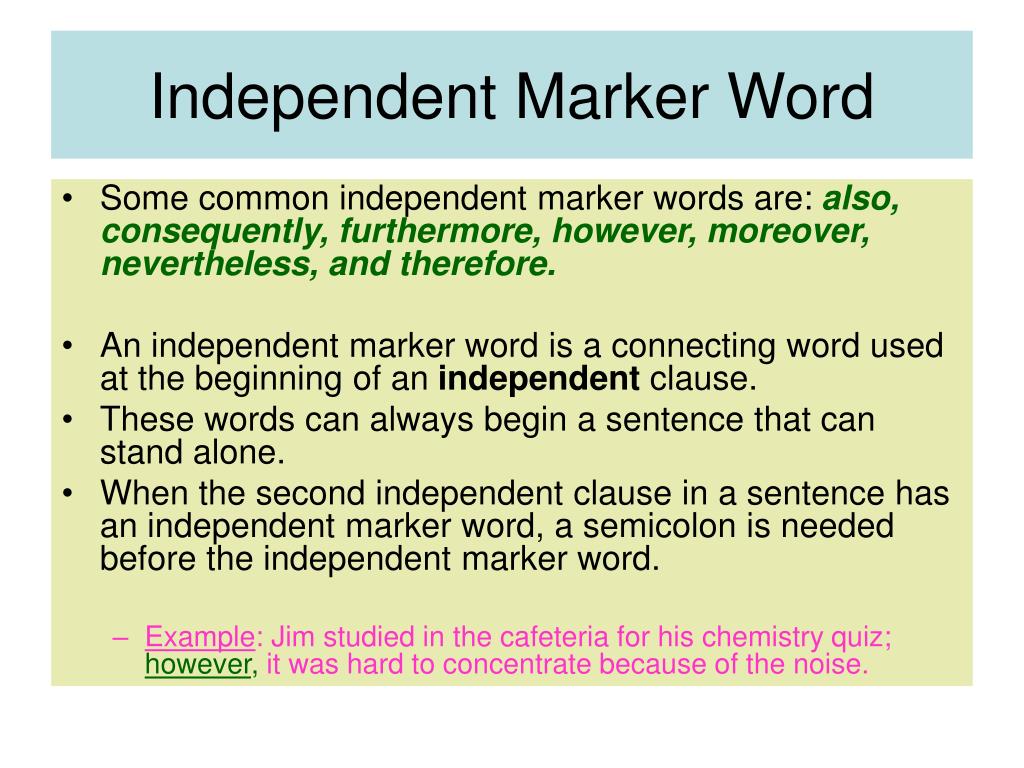

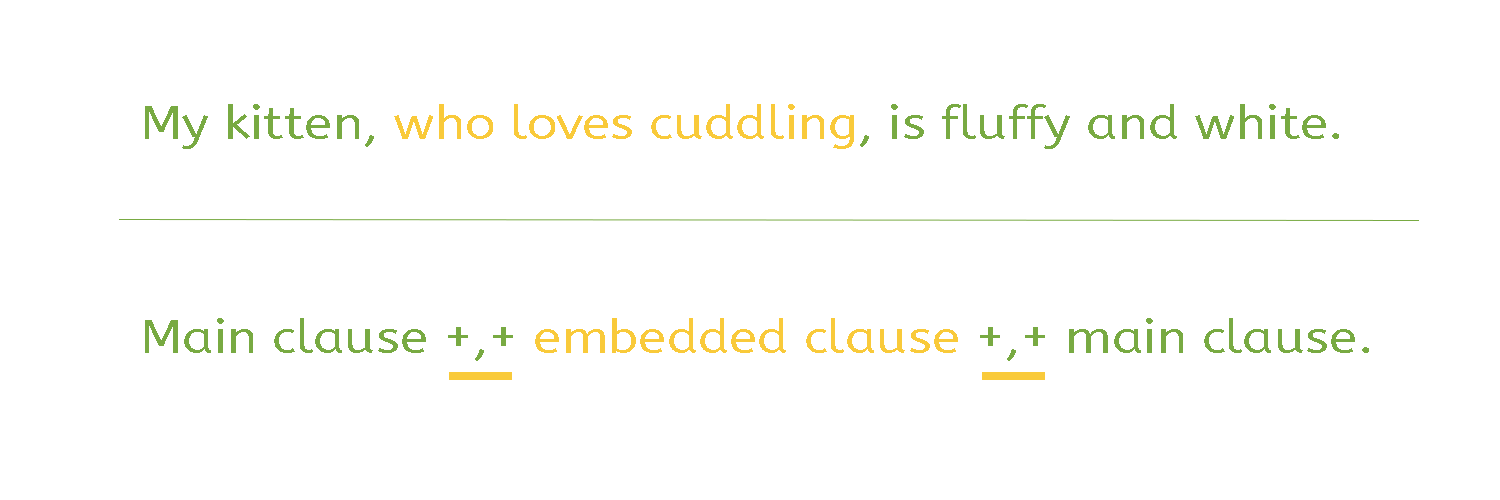




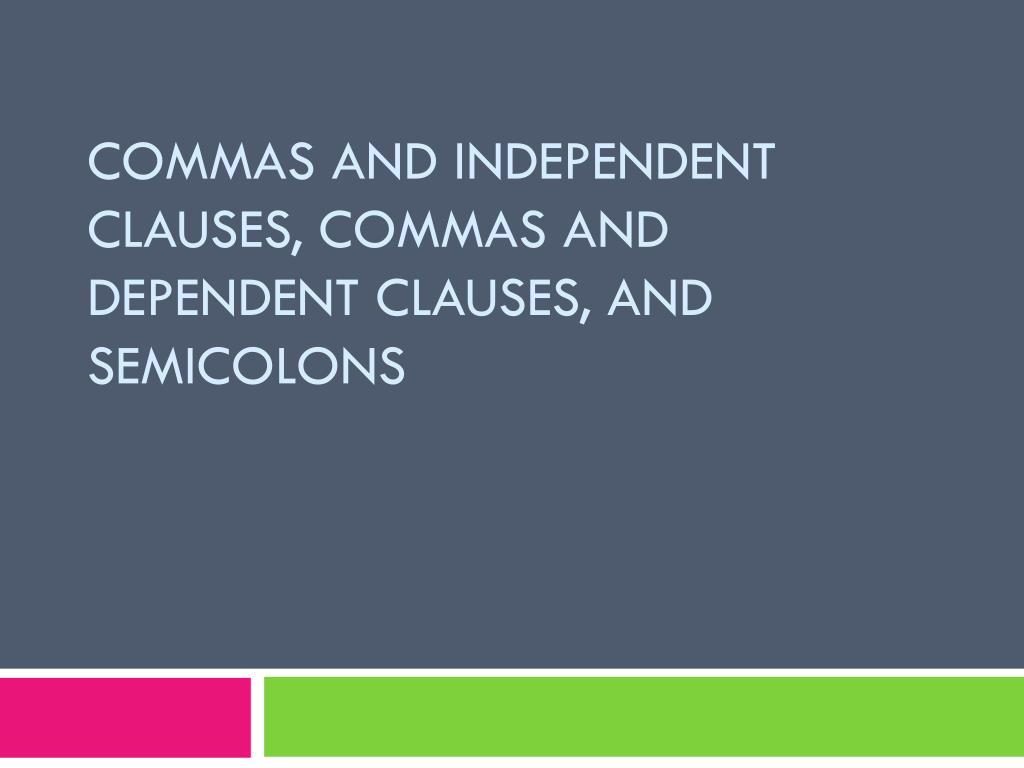


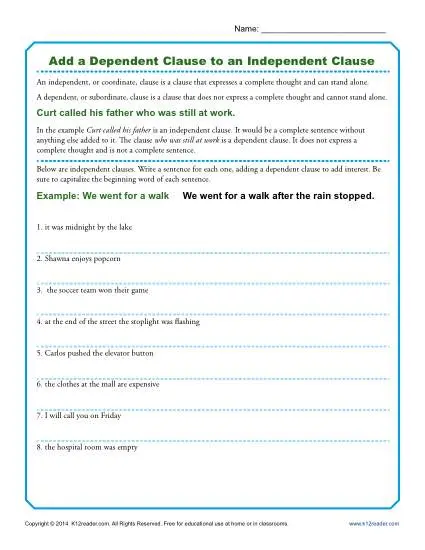



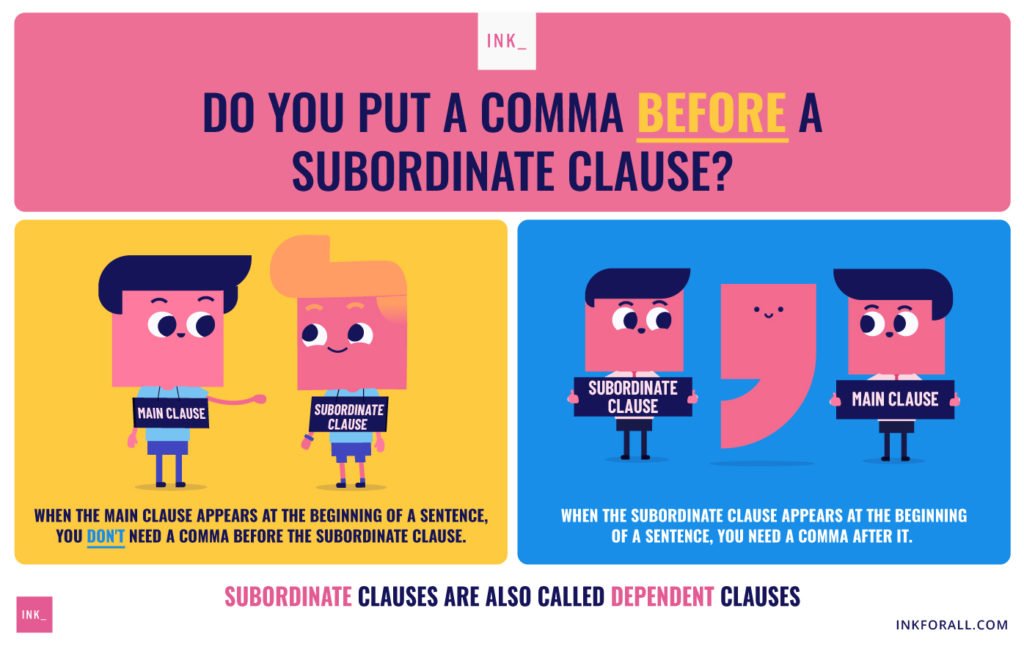













No comments:
Post a Comment
Note: Only a member of this blog may post a comment.